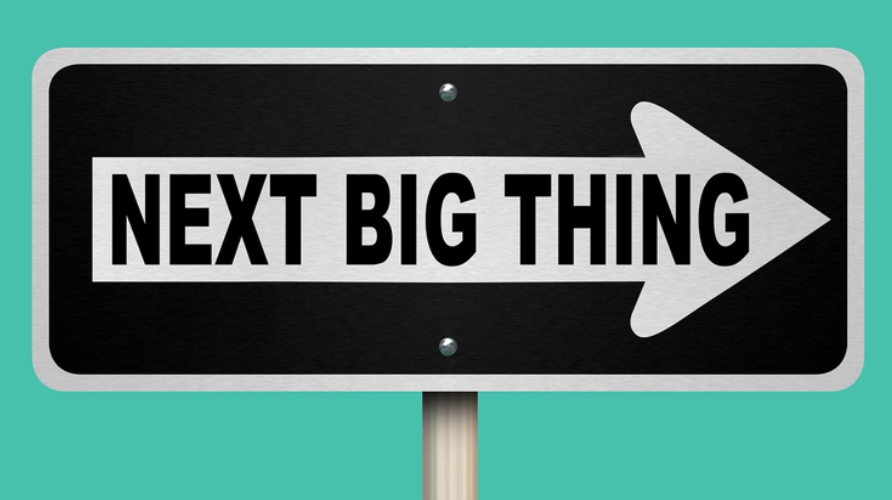
Consumers are fickle they change their minds, a lot. Yesterday I wanted coffee mid-morning, today I had tea. It’s not logical, I cannot tell you a reason why, other than that was what I wanted.
While my flip-flopping between tea and coffee does not have a significant affect upon the brand values of Nescafé or Tetley (other brands are also available), when 10 or 100 million consumers all make the same decision at about the same time, suddenly that does make a difference.
When such market changes occur brand owners look upon it as a paradigm shift and, with the benefit of hindsight, find a social, cultural, economic, even a political trend that has created the change in consumer behaviour.
If we survive the shift, we adapt to it. We change or reposition our offer. By definition, however, such behaviour is reactive. We noticed the trend because it affected our sales figures or our market share, we adapted to stem the loss in sales. We are following the trend.
Do you want to Follow the Trend or Predict it?
Behind every such trend are millions of individual consumer decisions. Very few of these decisions are momentous, even for that individual. They are just small individual decisions – like having a cup of tea today instead of a cup of coffee. But our individual consumer is making this one small decision repeatedly and so are millions of their compatriots all at around the same time.
So, when we look at the data we can see that the increased drive for plant-based foods coincides with increasing concern for the environment and animal welfare. But when we speak to individual consumers, many of whom have not given up meat or dairy completely but are simply making more discrete decisions not to choose meat or dairy on this occasion, we find the main driver of their changed behaviour is their own health and how the food that they eat makes them feel. Sustainability and animal welfare are not irrelevant, but the tipping point for their decisions to eat less meat and dairy is often “because it makes me feel better”.
So why is this Important?
Why is this important? Why does it matter what drives individual decisions if we can identify the overall trend? It probably doesn’t if you are happy enough to follow the trend – and your business is sufficiently robust to take the initial hit before you reposition to do so. However, if you want to react faster, it you want to see the trend coming and know how to respond before you lose too many sales, it does matter, a lot.
So where do Trends come from?
Trends never just come out of the blue. They normally emerge as two or more consumer concerns merge. It is like small streams each individually making their way down the mountainside. Each one is interesting, even beautiful in its own way, but none of them particularly significant. Then they converge creating a river. A substantial significant waterway.
Vegetarianism, even veganism, existed for decades as niche even radical lifestyles. Sustainability and environmental concerns are not new to Gen Z or even Millennials (Svante Arrhenius first published a paper predicting carbon dioxide levels could cause a Greenhouse Effect in 1896), and concerns around diet and health are almost eternal. It was when they came together that a significant trend emerged.
However, for most individual consumers it looks very different. Imagine that someone has built a dam across our river. Our streams coming together has made no difference to our individual consumer. As the water level rises behind the dam, they are becoming increasingly aware of the different issues, but awareness does not drive behavioural change until it reaches a tipping point. This happens as the water starts to flow over the dam. Generally, the consumer is consciously aware of one specific issue that caused the dam to break, but once it has the water from all the streams contributes to washing the dam away.
When we look at consumers’ attitudes and behaviour, we can see the water level rising and we can identify the specific weak point in the dam – the issue that will become the tipping point. We can see the trend as it starts rather than just recognise it in hindsight and we can identify which issue will be the ultimate trigger of consumer behavioural change.
What does this mean for me now?
Today we are looking at a different set of issues flowing together. Brand owners are understanding what the future looks like with changes in working patterns, shopping and social behaviours along with various attitudinal changes. We have a cost-of-living crisis with global inflation and increasing pressure upon business, household and personal budgets and in so many markets we have increasing social, cultural and political changes.
As brand owners we have a choice. We can sit and wait for the dam to break, for the sales numbers to show us the trend, or we can find a way to better understand our consumers. We can view the rising waters through their eyes, identify the weak point in the dam, predict what the tipping point will be and plan and respond before it happens.
Chris Lukehurst is a Consumer Psychologist and a Director at The Marketing Clinic:
Providing Clarity on the Psychological relationships between consumers and brands


